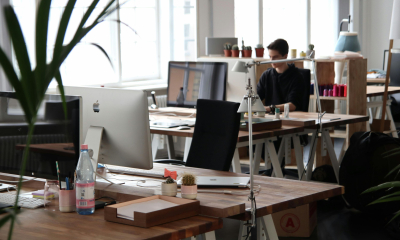
Offices come in many shapes and sizes, from minimalist start-up spaces to layered legal firms with decades of archives. But no matter the layout, they all share a need for structure. Not just walls and doors, but systems that bring order to daily activity. That’s why, when planning a workspace, it’s not just about the furniture or the laptops. It’s about how ideas are captured, stored, and accessed again.
Order isn’t optional
The modern office might be increasingly digital, but paper isn’t gone. Legal documents, contracts, reference materials, all of them still live in physical form. And if they’re not stored properly, they get lost. Forgotten. Or worse, compromised.
A classic filing cabinet still has its place in even the most tech-forward office. It gives physical documents a secure, structured home. With proper labelling and thoughtful use, these cabinets become more than storage, they’re archives of work done well. And for fields like law, finance, or human resources, that’s essential.
Plus, it sends a subtle message to clients: this team is organised. They don’t waste time hunting for a piece of paper. They know where things are, and that builds trust.
There’s also something reassuring about having a tangible backup. When networks fail or power flickers, those metal drawers remain as steady as ever. A filing system that’s easy to navigate isn’t just efficient, it’s resilient.
A surface for sharp thinking
Meanwhile, let’s move from storage to spontaneity. Great ideas often start as scribbles, and brainstorming doesn’t happen in silence. It happens with motion, collaboration, and the freedom to erase and start again.
A glass whiteboard is the grown-up version of the tools we loved in school. Sleek, durable, and easy to clean, it invites people to think out loud. To sketch without fear. To share without clutter. And because it blends into modern office design, it feels like part of the room, not something bolted onto it.
Glass whiteboards aren’t just practical, they’re motivational. There’s something energising about a clean, writable space. It encourages clarity. It draws people in. Unlike a cluttered document on a screen, it demands attention.
Teams that use visual tools to communicate tend to stay more aligned. It’s hard to miss what’s written in bold on the wall. And unlike sticky notes or shared docs, it’s right there, visible, collaborative, immediate.
Design that supports process
Offices aren’t just physical spaces. They’re workflows turned into architecture. The best tools in them don’t just sit there. They respond to how people move, think, and share.
What’s on the wall or under the desk can define how ideas get made, and remembered.
Copyright 2025. Guest post.
